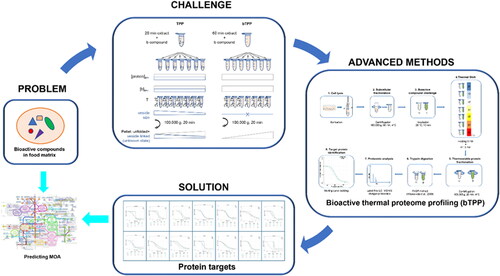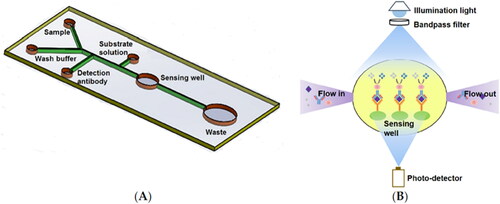Figures & data
Figure 1. Graphical representation of bioactive thermal proteome profiling strategy. Problem: uncharacterized bioactive compound in food matrix; Challenge: to obtain a proteome-wide food bioactive compound interaction map; Advanced method: bioactive thermal proteome profiling; Solution: unbiased identification of protein targets by MS; Opportunity: prediction of mechanisms of action of a novel compound by one single experiment and analytical technique.

Figure 2. Principle of surface plasmon resonance sensor. Surface plasmon resonance sensors detect a refractive index change within a detection area (<500 nm) as a modification of resonance angle (RA) (Yanase et al. Citation2014).

Figure 3. Microfluidic sensor. Schematic representation of the microfluidic ELISA sensor layout (not to scale) (A) and principle of the absorption detection with a miniaturized optical sensor device (B) (Weng, Gaur, and Neethirajan Citation2016).

Table 1. Novel advanced methods for application in the food allergy field.
